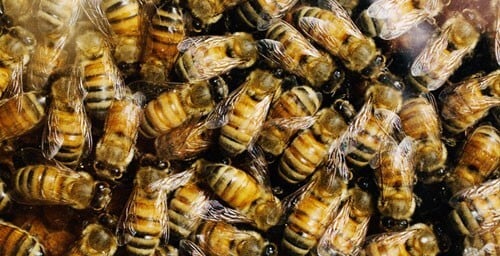Honeybees should be on everyone’s worry list, and not because of the risk of a nasty sting, an expert on the health of those beneficial insects said here today at the 246th National Meeting & Exposition of the American Chemical Society (ACS), the world’s largest scientific society.
Set aside the fact that the honeybee’s cousins — hornets, wasps and yellow jackets — actually account for most stings, said Richard Fell, Ph.D. Despite years of intensive research, scientists do not understand the cause, nor can they provide remedies, for what is killing honeybees.
“Some estimates put the value of honeybees in pollinating fruit, vegetable and other crops at almost $15 billion annually,” Fell said. “Without bees to spread pollen from the male parts of plants to the female parts, fruit may not form. That would severely impact consumers, affecting the price of some of the healthiest and most desirable foods.”
Farmers use honeybees to pollinate more than 100 different fruit and vegetable crops around the country in an approach known as “managed pollination.” It involves placing bee hives in fields when crops are ready for pollination.
“The biggest impacts from decreased hive numbers will be felt by farmers producing crops with high pollination requirements, such as almonds. Consumers may see a lowered availability of certain fruits and vegetables and some higher costs,” explained Fell.
He discussed the ongoing decline in honeybee populations in the U.S. and some other countries — a condition sometimes termed colony collapse disorder (CCD). Although honeybees have been doing better in recent years, something continues to kill about 1 in every 3 honeybees each year. He spoke at a symposium on the topic. Abstracts of other presentations appear at the end of this press release.
“There is a good bit of misinformation in the popular press about CCD and colony decline, especially with regard to pesticides,” Fell said. He is an emeritus professor of entomology at Virginia Tech, and an authority on colony decline in bees. “I think it is important to emphasize that we do not understand the causes of colony decline and CCD and that there are probably a number of factors involved. Also, the factors that trigger a decline may be different in different areas of the country and at different times of year.”
Some of the leading theories about the cause of CCD include the use of certain pesticides, parasites, diseases and overall hive nutrition. Beekeeper and other organizations are pushing to stop the sale of certain neonicotinoids, insecticides that some regard as the main culprit of CCD. However, Fell said that would be premature. The U.S. Environmental Protection Agency recently reviewed the situation and concluded that there is no scientific evidence that the neonicotinoids are causing serious problems with bee colonies.
Honeybees are not the only species of bee that can be used in managed pollination. If colonies continue declining, Fell believes that there will be an increase in the use of other species, including the bumble bee and alfalfa leafcutter bee. There are, however, measured declines in these species’ populations as well. In addition, they are not as easily managed for pollination as the honeybee.
“The major advantages of using honeybees are ease of movement, both in and out of orchards or fields, as well as the ability to manage colonies for higher populations. Honeybee colonies can be moved from one crop to another in a single season, something that cannot be done easily with bumble bees or solitary bee species such as the alfalfa leafcutter bee,” explained Fell. “If we can gain a better understanding of the factors causing honeybee decline, we may be able to apply this knowledge to protecting other species.”


